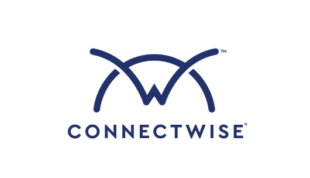Windows Automated Patch Management: Best Software, Process, Best Practices and Benefits
With an ever-evolving need for impeccable data security measures, especially in the wake of increasing cybersecurity threats, automated patching has taken a central position in enterprises’ security protocols. According to a report by Ponemon Institute, in the year 2019, 60% of the data breaches resulted from delayed or missed patches. this is where automated patching helps. It reduces manual intervention and with the help of scheduled patches, your data is always protected against known vulnerabilities.
In the backdrop of increasing reliance on automated patching, let’s have a look at what it is, how it compares to manual patching, the process, top software, benefits, and best practices for automated patching.
- Understanding of Automated Patch Management
- 5 Best Windows Automated Patch Management Tools/Softwares
- How to Choose the Right Windows Automated Patch Management Software
- The Automated Patch Management Process with AirDroid Business (Step by Step)
- Best Practices for Windows Automated Patch Management
- What are the Benefits of Windows Automated Patch Management
Part 1: Understanding Automated Patch Management
Before we delve into the top tools for automated patching, let's first have an understanding of what is automated patch management and how it compares to its manual counterpart.
What is Automated Patch Management and How It Works?
Automated patch management refers to an automatic detection, downloading, and deployment of updates across the enterprise’s IT assets. It helps address security vulnerabilities, software updates, and bug fixes without the need for manual intervention. It helps ensure the IT system stays up-to-date, productive, and secure, and always complies with safety standards.
For automated patch management, you need a software or tool. It helps with automating the entire process of detection, downloading, testing, and deployment of patches while you sit back and watch your system staying secure, up and running. It helps you save time and mitigate human error while ensuring compliance and scalability.
Automated Vs. Manual Patching: Which One Is Better
Both the manual and automatic patching are meant to provide organizations with data security and timely updates. For some, manual patching is a suitable option while for others, automatic patching would prove to be more handy and manual patching would be a bit cumbersome to handle. Let us have a look at salient features, strengths, and downsides of both approaches.
| Description | Advantages | Disadvantages | Use Cases |
|---|---|---|---|
| Automated Patch Management: It uses software tools to automatically identify, download, test, and deploy the patches without any manual intervention. | Saves time, mitigates human error, ensures timely updates, provides scalable patch management, provides centralized patch management for entire IT network located at diversified locations, allows scheduling of patches. | The process needs to be monitored and configured to avoid downtime, if the testing isn’t appropriate, errors might be introduced, limited control. | Larger setups with a vast system to manage, DevOps practices and Cloud-based environments, enterprises with strict compliance requiring regular patch updates. |
| Manual Patch Management: It involves manually identifying, downloading, testing, and deploying patches as and when needed by IT admin. | Appropriate for the special systems that need dedicated attention, selective and customizable when it comes to particular requirements, complete control over the patching schedule and process. | Highly time consuming, especially for larger setups, prone to human error, which can cause inconsistencies, missing or delaying a patch can result in vulnerabilities. | Small environments or highly sensitive systems requiring control, legacy systems that are not compatible with automated tools, situations where testing is highly crucial before implementing patches. |
When Should You Use Windows Automated Patch Management?
Although automated patch management has a range of lucrative benefits to offer, it isn’t suitable under all circumstances and for every organization. For example, smaller setups with fewer IT resources to manage might find it a bit cost-intensive. Similarly, when there is a need for highly specialized patching with lots of details to be configured, manual patching would be preferable and automated patching could rather be counter-productive.
However, in most of the other cases, automated patching is a highly desirable option. Given below are the circumstances when automated patching can be very beneficial:
If You are a Large Enterprise
For mid-sized to large enterprises with thousands of systems to manage, manual patching is not a practicable solution. Rather, you would run high on the risk of human errors and delays in patching. Here, automated patching is the most convenient and timely patch management option.
- Quick, easy, and timely updates
- Scalability for growing organizations
- Fewer instances of downtime and disruptions
If you are A Managed Service Provider
MSPs are juggling between clients and that too with different needs and from different industries most of the time. Relying on manual patching won’t make sense and would be rather cumbersome. They could do with the convenience, speed, and reliability offered by automated patch management.
- Enhanced customer satisfaction
- Maintains consistency when managing more than one client
- Reduced chances of human error
When You Need to Meet Compliance Requirements
Managed industries like legal firms, healthcare, government sector organizations, and finance sector must comply with industrial regulations like GDPR and HIPAA. Automated patching helps meet stringent compliance requirements.
- Avoid penalties
- Seamless audits
- Safeguard crucial data
If You Have Remote or Distributed IT Systems to Manage
With an increasing trend of remote workforces and as the organizations grow and have resources distributed across different locations, automated patch management is the only feasible solution.
- Centralized patch management for distributed systems
- Cost and time saving
- Seamless and standardized management for entire network
Part 2: 5 Best Windows Automated Patch Management Tools/ Softwares

Official Website: Comprehensive Windows Patch Management | AirDroid Business
- Auto scan and detect new available patches
- Categorize and approve patch updates
- OTA batch install and schedule updates
- Reboot management with scheduled and deferred management to avoid downtime
- View patch history
- Driver updates for compatibility and functionality
Standard: $21 per device/year
Enterprise: $33 per device/year
- Centralized management
- Custom security policies implementation
- Does not support third-party app patches

Official Website: https://www.connectwise.com
- Asset discovery
- Endpoint management
- Third-party patching
- Simple interface with easy to use centralized dashboard
- Slower performance and scripting issues

Official Website: https://patchmypc.com/
- Robust security
- Insightful reporting
- Scalability
Enterprise Plus: $3.5/device/year ($2,499 minimum starting price when purchasing)
Enterprise Premium: $5/device/year ($3,499 minimum starting price when purchasing)
- Simple interface
- A few issues with cloud support and comparatively fewer features

Official Website: https://www.automox.com/
- Cloud native architecture
- Role based access control
- Cross platform support
Automate Essentials: Custom Pricing and volume discounting is available
Automate Enterprise: Custom Pricing and volume discounting is available
- Good customer support and cross platform compatibility
- Reporting is not very insightful and access issues were found

Official Website: Patch Manager: Remote Desktop Patch Software | Solarwinds
- Microsoft WSUS patch management
- Integration with SCCM
- Third party application patching
- Patch compliance reports
- Get notified on available and failed updates
- Easy patching through deployment groups
- Issues with third-party apps patching
Part 3: How to Choose the Right Windows Automated Patch Management Software
Choosing an appropriate Windows automated patch management tool is crucial for impeccable security, enhanced performance, and compliance with standards while avoiding downtime. Here is a list of features to consider in your quest.
- Cross-Platform Support: While it may not seem to be an important point to consider at the moment, as you expand your network, or include endpoints with varying platforms, having a tool that supports all platforms is crucial. It helps in ensuring scalability.
- Easy Setup Process and Intuitive Interface: Deployment of the software shouldn’t be complicated or time-consuming. Moreover, it is important to go for a tool that is easy to use for your IT staff and provides a comprehensive, yet simple interface that simplifies patch deployment and scheduling.
- Automation and Rollback: It should offer automatic detection, download, testing, and deployment. Moreover, the tool should have the feature of rolling back the patches that go wrong.
- Customization: Your selected tool must allow for customized policies to be efficiently implemented for bespoke solutions that fit your needs besides automation.
- Integration: The selected tool must fully integrate with the existing software e.g. the management tools and security solutions. It reduces manual work and compatibility issues.
Part 4: The Automated Patch Management Process with AirDroid Business (Step by step)
AirDroid Business is among the most preferred Windows automated patch management solutions in the market with its simple-to-use interface and comprehensive features. Let us have a look at various steps involved in its automated patch management.
- Step 1: Login and enroll your Windows devices. There are two ways to do this: manually via a deployment code or download the Biz Daemon, which will automatically enroll your devices.
- Step 2: Patch management: Open the central dashboard and let the software scan for necessary patches from trusted sources, like Microsoft. IT staff can categorize patches by level of importance and deploy them accordingly.
- Step 3: Management options:
- Categorization and Deployment: Once patches have been deployed, installation can be immediate or scheduled during out-of-office periods. The same applies to devices that require rebooting after being patched.
- Real-time Monitoring: IT teams can monitor the status of the patch deployment via the central dashboard in real-time. They can confirm which patches have been successfully applied, identify which have failed, and verify whether the device is in order after rebooting.
- Comprehensive Patch History: AirDroid Business compiles a complete history of every patch deployed and installed on every device on the network. This allows for audit compliance and provides useful information about device life cycles.
Part 5: Best Practices for Windows Automated Patch Management
Let us now have a look at what practices to follow for trouble-free and effective Windows automated patch management.
- Prioritize Patches Based on Security and Impact: Give priority to those patches that address serious vulnerabilities, as neglecting or delaying them can pose security risks or affect system functionality.
- Establish a Regular Patching Schedule: Avoid downtime by scheduling the patch deployment after busy hours. Never miss important patches by setting a schedule for consistency.
- Test Patches before Deployment: By pre-deployment testing, potential issues can be identified before the patches are deployed to the entire system, helping avoid serious issues and downtime.
- Monitor and Report Patch Deployment: Don’t forget to monitor the progress of patching and identify problematic patches. Prepare compliance reports to help with proper accountability.
Part 6: What are the Benefits of Windows Automated Patch Management?
Windows automated patch management can be of significant importance, especially for larger organizations and those requiring strict compliance. Here is how they help:
- Strengthen Security: Get leak-proof, stringent security with scheduled automated patches. This helps organizations comply with industry standards and protect their precious data against cyberattacks and unauthorized access.
- Boost Productivity: Stay in the loop regarding important software updates and app updates. Auto-detecting and deploying the latest updates ensures your system is completely up and running with the latest updates promptly installed. Moreover, your staff is freed from the need for manual patch management and can concentrate on more productive tasks at hand.
- Reduce Human Errors: The biggest benefit of automation is that it mitigates the chances of human error, which are common in manual patch deployment, especially when dealing with a vast IT system. Errors like missing important updates or selecting the wrong update version can be avoided with automated patching.
- Simplify Compliance Reporting: Quickly generate compliance reports with automated patch deployment tools. This helps with compliance audits.



